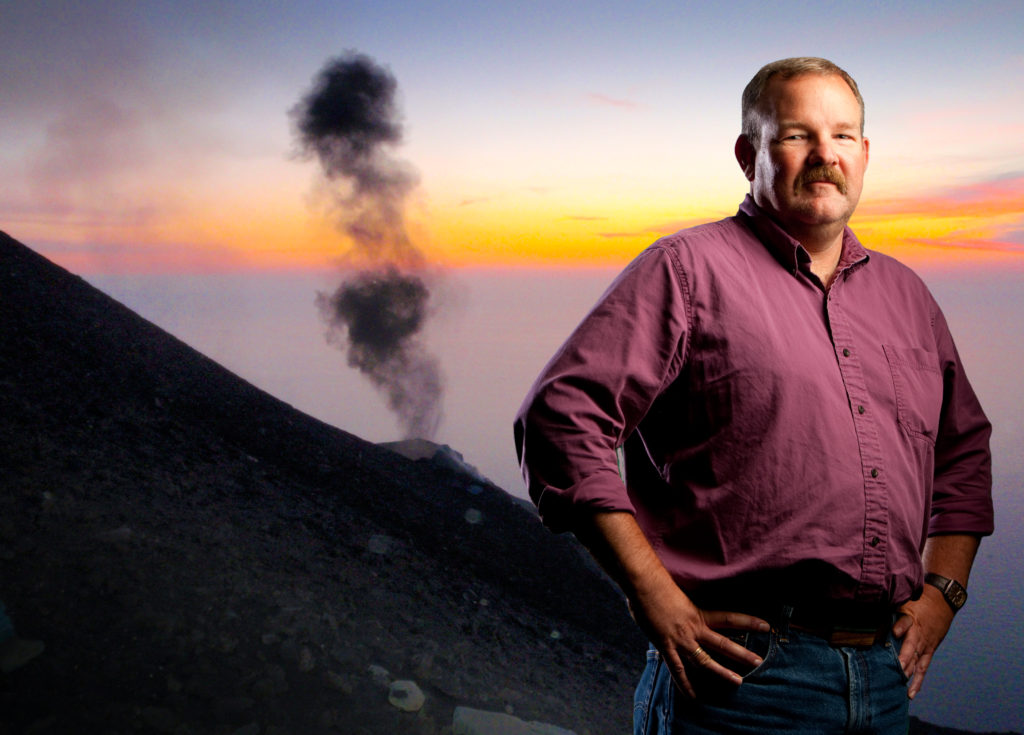Greg Valentine, University at Buffalo – Volcanic Flows

Portrait of Gregory Valentine, Professor of Geology
What makes the flow of a supervolcano travel so far from the eruption?
Greg Valentine, professor of geology at the University at Buffalo, examines whether speed or weight makes the flows travel great distances.
Ph.D., Geological Sciences, University of California Santa Barbara – 1988
Specialties and Interests: Volcanic risk, phreatomagmatic explosive eruptions, basaltic volcanic fields, pyroclastic deposits, volcano fluid dynamics, volcaniclastic and surface processes.
Volcanic Flows

Supervolcanoes typically are surrounded by sheets of ash and pumice that were deposited by large pyroclastic flows. A major volcanological mystery is related to the extreme mobility of these flows. Were they able to travel so far because they had extremely high velocities? We haven’t had a way to directly address this question until recently.
Olivier Roche at University of Blaise Pascal in France recently conducted experiments with lab-scale pyroclastic flows moving over layers of loose beads. He found a clear relationship between the flow speed and the weight of individual beads that could be picked up by the flows. David Buesch and I measured rocks that were picked up by the flow that deposited the Peach Spring Tuff in Arizona and southern California. We combined these data with Roche’s experimental relationships to estimate the flow speeds during that super-eruption. Although the flow traveled more than 150 km, the speeds were relatively modest – 5-20 m/s, compared to speeds other workers have suggested for some large eruptions, ranging up to 300 m/s.
The results suggest that high speeds were not the key to this flow’s mobility. Rather, the key ingredients where that an extreme rate of ash discharge had to be maintained for some time, and that the concentration of fine ash in the flow was high enough to trap volcanic gases and air. These trapped gases were slightly pressurized and reduced the internal friction of the flow, allowing it to travel across the landscape almost like water. As long as ash poured out of the ground at a sustained high rate, the flow kept moving outward until its supply was cut off.
Similar processes happen in smaller, more frequent explosive eruptions around the world. Our improved understanding of pyroclastic flows plays a big role in how we assess and mitigate volcanic hazards.


